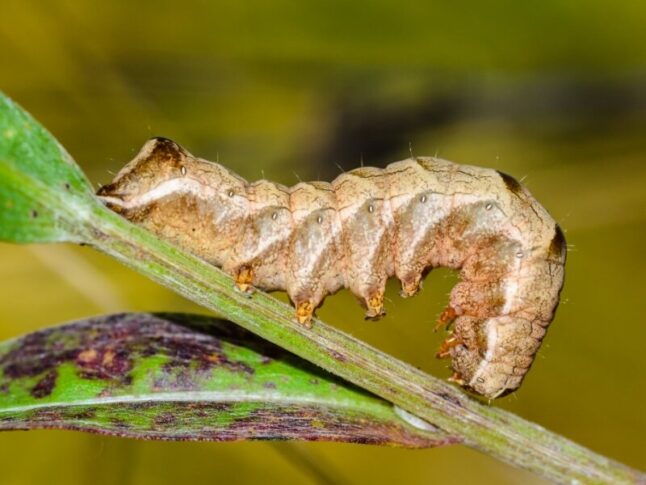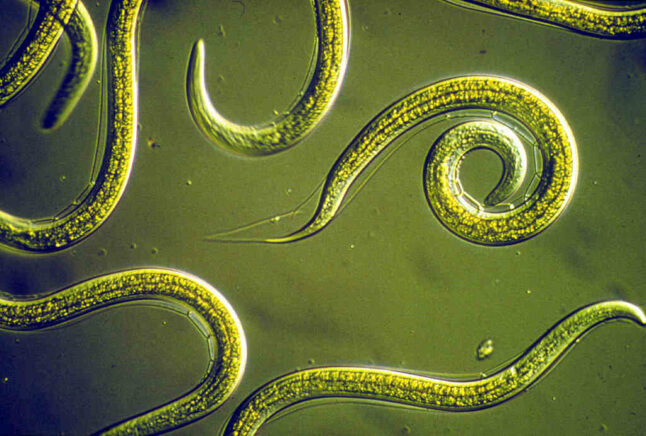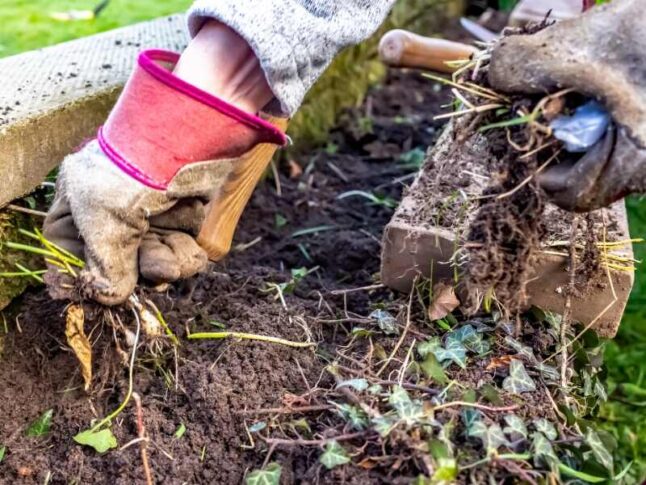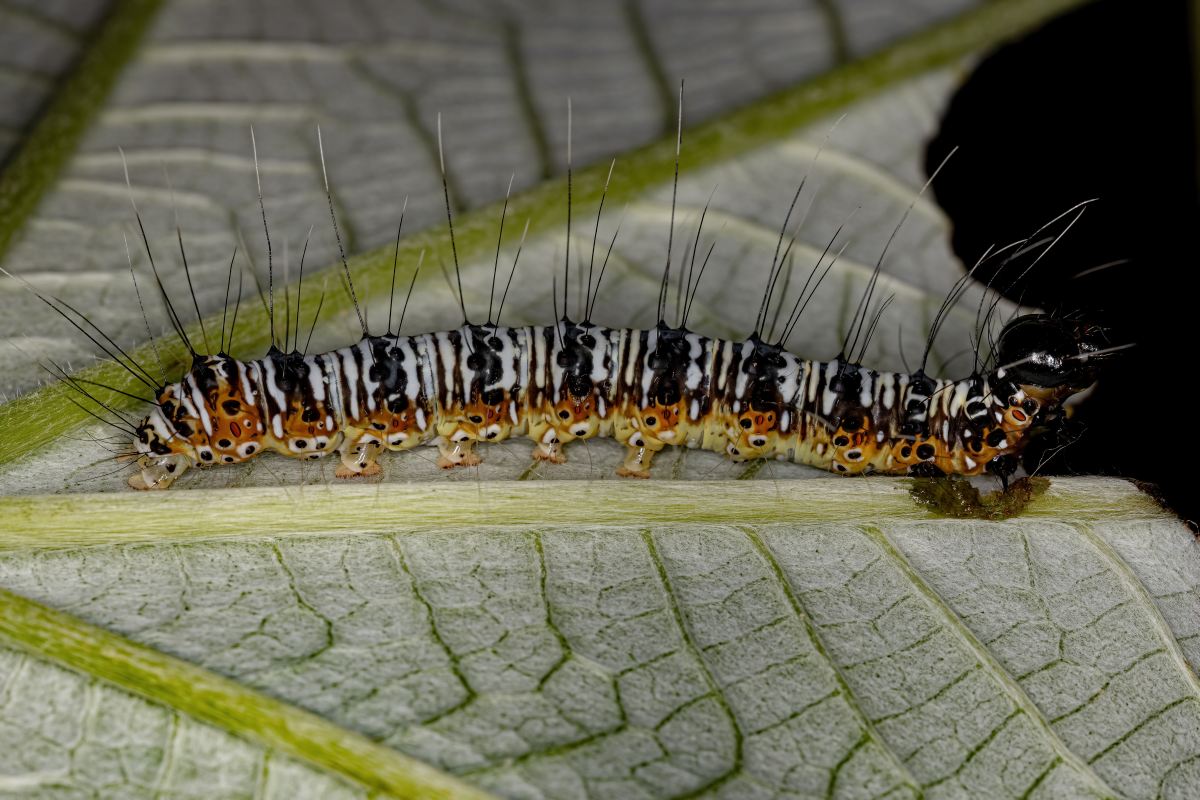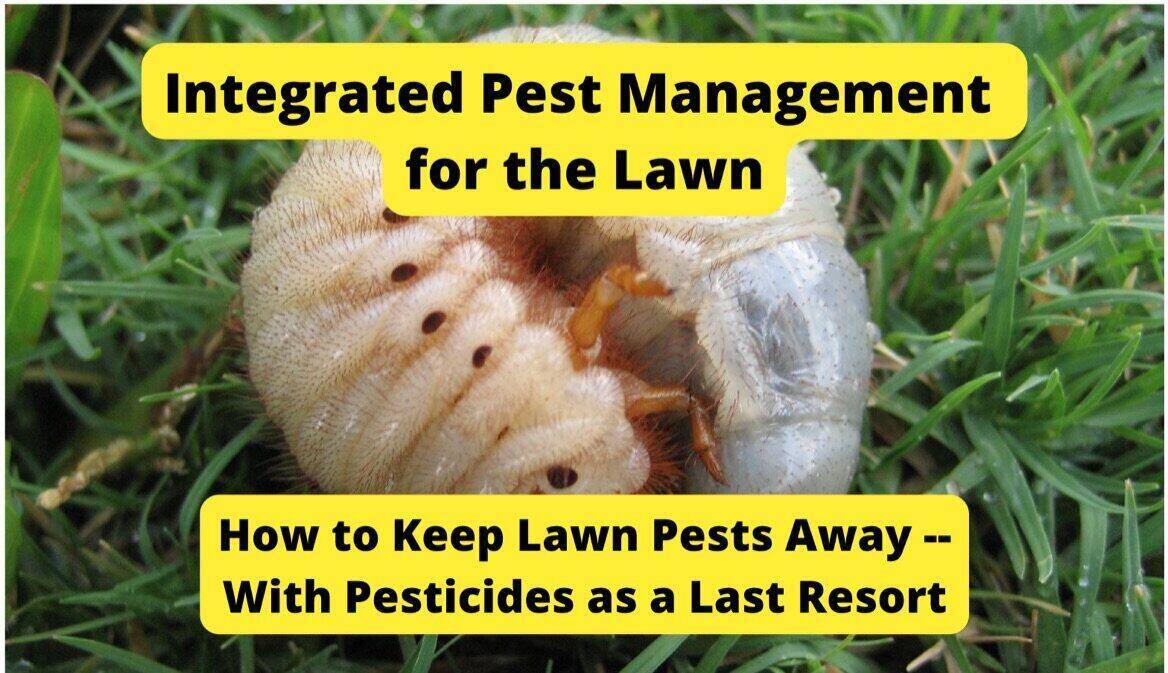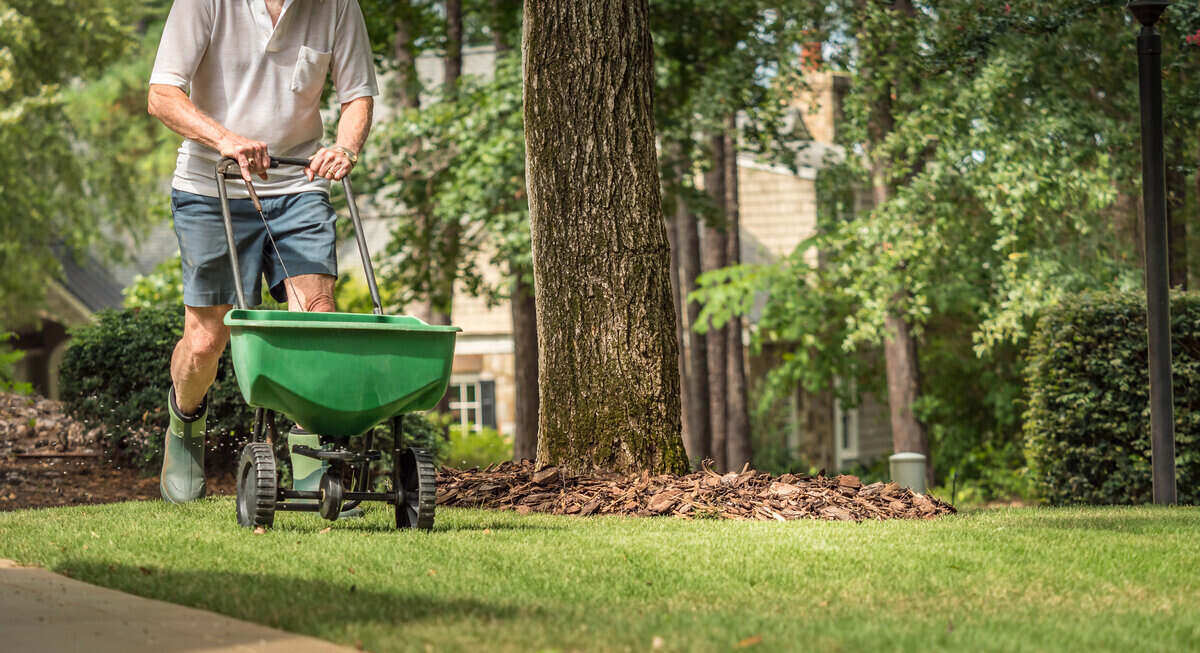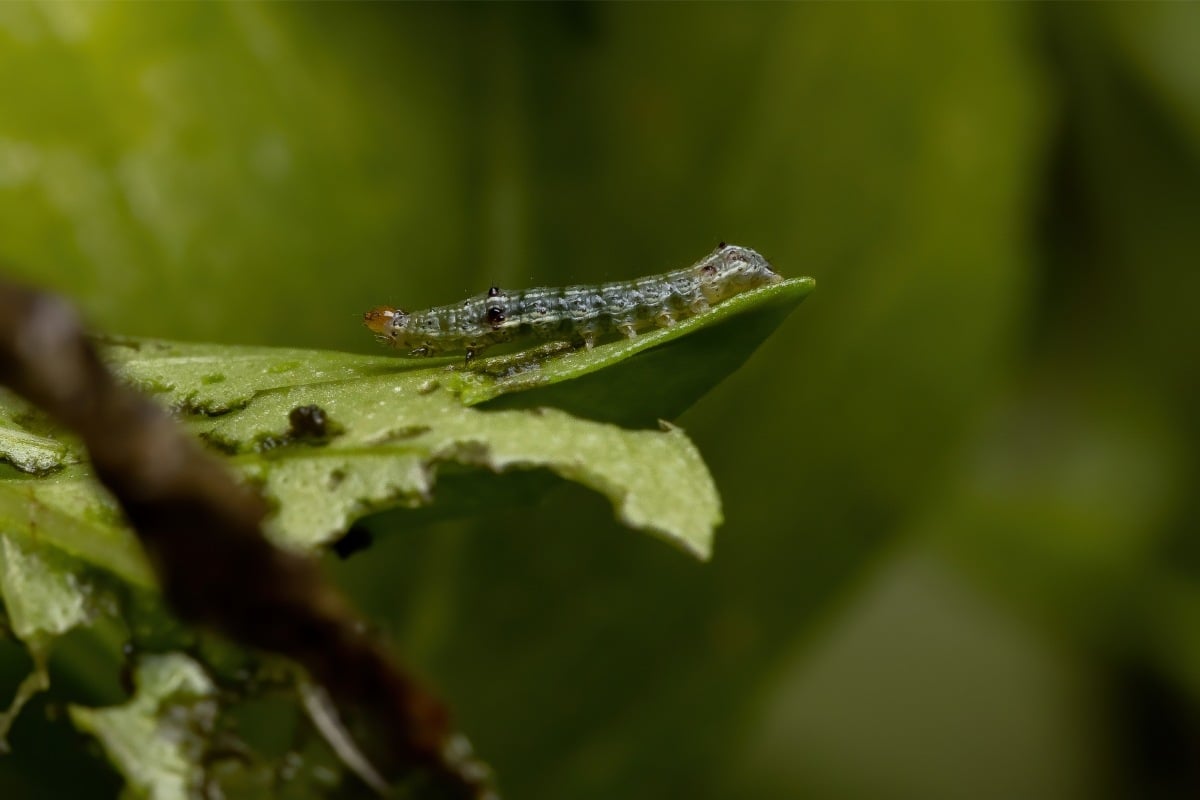
Who loves waking up to find their plants ravaged by cutworms? Nobody. Cutworms can really do a number on your budding lawn or garden, but with the right knowledge and strategy, you can nip their destruction in the bud. Learn in this article how to get rid of cutworms, including natural methods and chemical controls.
Using Pesticides for Cutworms
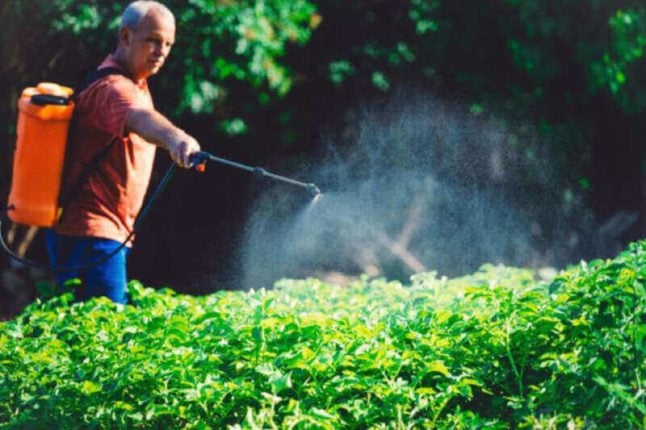
If you want pesticides to work on cutworms, you have to get the timing right. The first step is to familiarize yourself with the life cycle of cutworms, which our article “What Are Cutworms?” can help with. Spring, when cutworm larvae emerge from the soil to start feeding on plants, is when you should apply pesticides.
Spray pesticides around the base of affected plants to target cutworms in the soil. You can also spray the plants’ stems and leaves in case you’re dealing with a species of climbing cutworms. Treat your plants in the evening since cutworms come out to feed at night.
Pesticides with the following active ingredients are effective against cutworms:
- Carbaryl – The Andersons DuoCide Professional-Grade Lawn Insect Control
- Cyfluthrin – BASF Cy-Kick CS Insecticide
- Permethrin – Durvet Permethrin 10%
- Deltamethrin – Bayer Suspend
- Bifenthrin – Compare-N-Save 7.9% Bifenthrin Concentrate for Insect Control
- Lambda-cyhalothrin – Rockwell Labs LambdaStar UltraCap 9.7% Insecticide
Note: Synthetic pesticides should be your last resort and should only be used for an especially large, stubborn cutworm infestation. Because pesticides can harm pollinators such as bees, butterflies, and ladybugs, they can actually hurt your garden in the long run. Also, be sure to follow the product instructions carefully for your own health and safety.
How to Get Rid of Cutworms Naturally
Instead of pesticides, there are many natural pest control methods that are effective against cutworms. We highly recommend trying as many of these methods as possible before you turn to chemicals. Here are the best ways to get rid of cutworms naturally:
Handpick Cutworms Off Your Plants
Handpicking isn’t a practical solution for large populations, but it can help with small-scale cutworm infestations. Go out with a flashlight after dark to look for cutworms since these pests are nocturnal. The day following rain or a thorough watering yields the highest harvest.
Be sure to wear gloves when you handpick cutworms, as some species secrete irritants that can cause a rash. Have a bucket with soapy water nearby to quickly drown the little critters after you pull them off – or relocate them to a natural habitat, such as a forest.
Create Barriers Around Plants
Because cutworms live in the soil, you can keep them off your plants by creating a physical barrier around the base of each affected plant. Plastic plant collars, aluminum foil, and cardboard rolls (such as toilet paper rolls) can be used as barriers around young plants.
Extend the barrier a few inches into the soil to keep burrowing critters away. Young plants are usually more vulnerable to cutworms, so take precautionary steps sooner rather than later after planting something new.
Beneficial Nematodes
Beneficial nematodes like Heterorhabditis bacteriophora and Steinernema carpocapsae, both of which are naturally occurring, help you eliminate cutworms without harming other beneficial insects in your garden.
Apply beneficial nematodes to the soil during spring as soon as the soil warms a bit since warmer temperatures make them more effective. The nematodes contain a bacterium that can kill cutworms and similar lawn and garden pests in as little as 24 to 48 hours.
Buy Now: NaturesGoodGuys – Triple Blend Beneficial Nematodes
Bacillus thuringiensis (Bt)
Never underestimate the power of organic insecticides like Bacillus thuringiensis (Bt), which infects and kills larvae without disturbing other organisms. It should be applied weekly after planting new grass or landscape plants since cutworms tend to prey on more vulnerable seedlings.
Limit the spray to plants being targeted by cutworms because it can affect all kinds of caterpillars, including those of pollinators, such as butterflies.
Buy Now: 8066 BT Thuricide Spray
Create Natural Predator Habitats
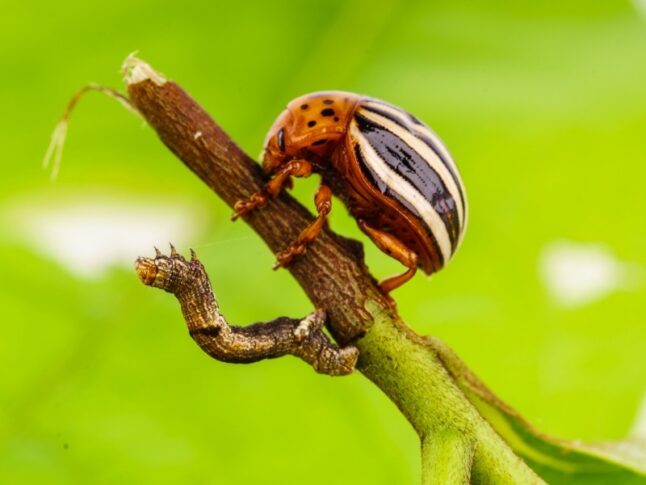
To enlist Mother Nature’s help in getting rid of cutworms, you can attract beneficial insects like spiders and beetles, which prey on cutworms. Attract them by putting up artificial nests or bug boxes around your garden.
A paper wasp nest (also called potter wasps) can also come in handy since they feed on the larvae of many garden pests, including cutworms.
Attracting natural predators of cutworms is a long-term solution, and it will take time for it to be effective. It may take a few seasons for your lawn or garden to house enough beneficial insects to decimate the cutworm population, but the payoff will be a pest-free landscape for years to come.
Diatomaceous Earth (DE)
Diatomaceous earth (DE) is a fine powder made of the ground-up fossils of tiny organisms called diatoms. The powder is harmless to humans and larger animals (so long as they don’t directly ingest it), but it’s sharp around the edges for little creatures like cutworms.
Those sharp edges cut into the pest, while the powder also absorbs the cutworm’s natural oils, causing it to dehydrate. Sprinkle a layer of DE around the base of young plants to kill any cutworms that come too close.
Buy Now: Safer Brand Diatomaceous Earth
Till the Soil
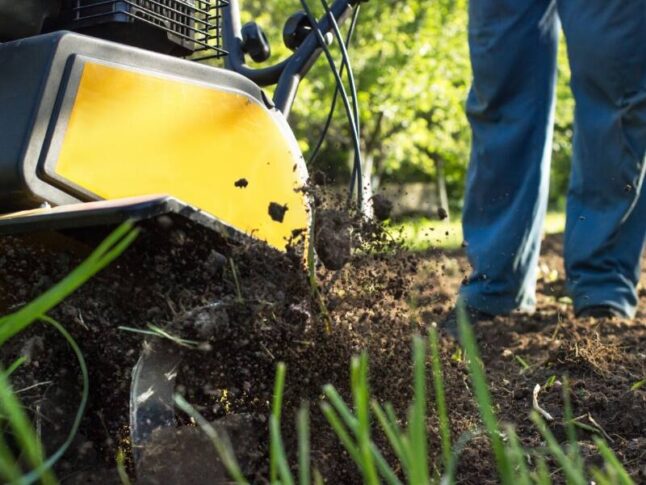
Tilling your soil can help to reduce the cutworm population in your lawn and garden. If you turn the soil a few times a year, it will increase mulch breakdown and expose the larvae. This ensures they won’t survive the winter, reducing the population by a huge margin.
For added advantage, let the area stay tilled and loose so your local birds can finish off the remaining cutworms.
Nutrient-Rich Soil
Healthy veggie beds, gardens, and lawns with healthy soil are less vulnerable to cutworm infestations, as there is little to no room for eggs and larvae beneath the soil surface.
So if you maintain healthy, nutrient-rich soil with plenty of organic matter, keep the grass and weeds short, and practice other standard Integrated Pest Management techniques, cutworms will generally stay away from your garden.
Eggshells and Coffee Grounds
Many people recommend using eggshells or coffee grounds at the base of plants to deter cutworms. While it may act as a good remedy for small populations, unfortunately, the science doesn’t back this method up yet.
Theoretically, eggshells and coffee grounds will create a barrier if they are re-applied often. However, this barrier is only effective for shallow surface-feeding caterpillars. Since cutworms tend to chew deeper roots and stems, eggshells and coffee grounds aren’t the most reliable solution.
Epsom Salt
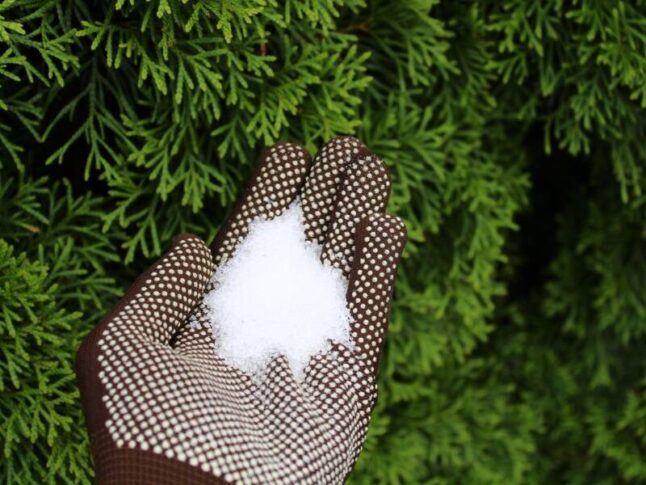
Another home remedy often recommended for cutworms is Epsom salt. Like with eggshells and coffee grounds, this method has not been scientifically proven – although some gardeners swear by it.
Epsom salt is a mineral compound that some claim will deter cutworms if sprinkled around the base of plants. Others claim the mineral’s abrasive properties can dehydrate soft-bodied insects on contact, similar to how DE works. See our article on using Epsom salt for cutworms for an in-depth look at this hit-or-miss solution, why it might work, and why it might not.
Buy Now: Epsoak Epsom Salt
Spinosad
Spinosad is a natural insecticide that contains chemicals derived from bacteria. Even though it’s natural and organic, this pesticide can be toxic to honeybees if applied in the daytime when bees are active.
For the best results, it should be sprayed and left to dry in the evening or at night when honeybees are inactive but cutworms are feeding.
Buy Now: Natural Guard Spinosad Soap
Pest-Repelling Plants
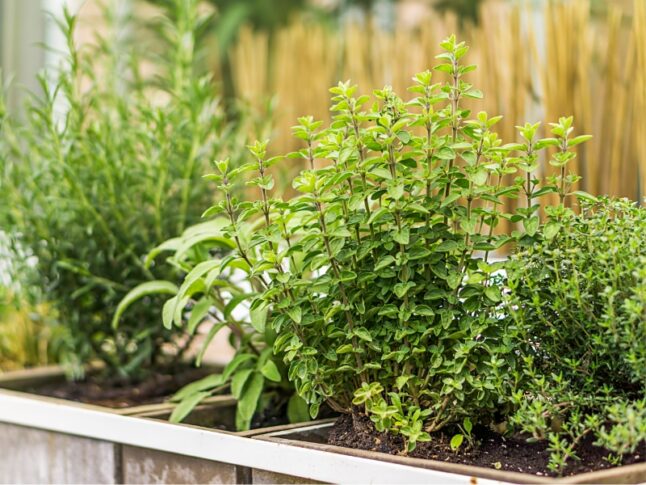
We’re all familiar with repellents like citronella candles, but did you know there are several plants that naturally repel pests? For example, tansy, sage, and thyme ward off cutworms when planted around the edges of a garden.
Planting these types of flowers and herbs around your lawn and garden can be a great line of defense since they don’t require any regular maintenance or special care.
Essentria IC-3
Essentria IC-3 is a ready-to-use spray that contains a blend of essential oils like peppermint oil, rosemary oil, and geraniol. These natural oils disrupt cutworms’ nervous systems, eventually killing them.
Best of all, this solution is safe to use around kids, pets, and livestock when used per the attached instructions. Ants, chiggers, spiders, ticks, and other common backyard pests can also be controlled with Essentria IC-3.
Buy Now: Essentria IC3 Insecticide Concentrate
Cornmeal Treatment
Cornmeal is a great natural pesticide that can help get rid of cutworms. Just sprinkle the cornmeal around the base and leaves of your plants. If cutworms ingest it, they won’t be able to digest it and will die. It may be a slow process, but it’s an effective one.
Molasses Treatment
Cutworms love sweet food, so add molasses to the mix. Mix two parts wheat bran, one part molasses, and one part sawdust to create a thick paste.
Draw circles on the ground with the mixture around your plants where cutworms may be present. If they crawl over the thick substance, they’ll get stuck in the mix, and you’ll be safe from further invasion.
Create a Soil Barrier Around your Garden
Bare soil creates the perfect environment to keep cutworms away, as it is dry and free of shade. Leave a barrier of dry, bare soil around your plants or lawn to keep cutworms out.
This will give cutworms no chance of approaching your garden and keeps your precious plants safe.
How to Prevent Cutworm Damage
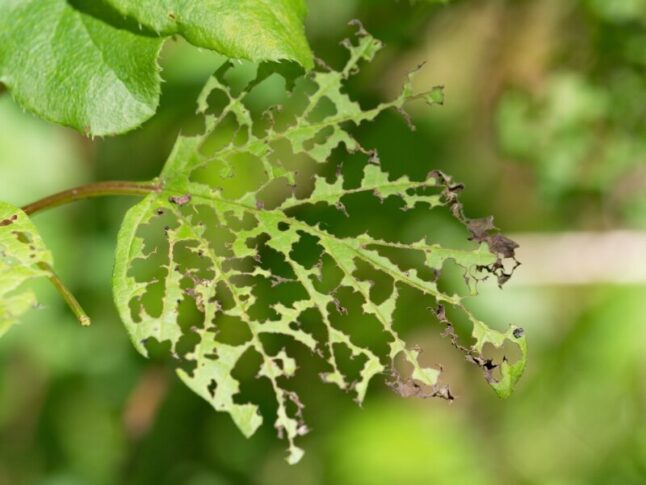
Cutworms can be a nuisance once they take over your lawn or garden, but there are ways to prevent them from getting into your landscape in the first place. Here are the best preventative methods.
1. Avoid Early Plantings
Cutworms tend to be active during the early growing season when the soil starts to warm up after winter, and they mostly feed on young grass and plant seedlings. So, if you want to stay one step ahead, avoid planting anything new in early spring, so they won’t have anything to feed on.
2. Get Rid of Weeds and Plant Debris
Remove weeds and plant debris from the area around your grass and plants regularly to keep cutworms away from your yard. Keeping the area around your veggies, flowers, or lawn clean helps reduce the cutworm population since this kind of plant debris is where adult cutworm moths like to lay their eggs.
3. Put Up Bird Houses
Birds can be a great source of pest control, and by putting up bird houses around your garden, you’re inviting helpful birds like blackbirds and meadowlarks that love to eat cutworms. Plus, they don’t require much effort!
Just throw up a few bird houses with nesting material, and soon enough you’ll have a bird-infested garden that is free of cutworms and other lawn and garden pests. Get more tips for attracting birds to your yard in our guide.
FAQ About Cutworms
Cutworms aren’t the only culprit – other insects that can eat plant stems include whiteflies, earwigs, squash bugs, and stem borers. Positively identify the pest in your garden before treating it, or the treatments may not be effective.
Peppermint oil is an effective natural alternative to chemical treatments when it comes to getting rid of cutworms. It helps repel various garden pests including cutworms, slugs, and beetles.
For humans, cutworms are harmless since they do not bite or sting. However, when it comes to your garden, these critters can cause major damage if left unchecked, munching on the stems, and sometimes the leaves and buds, of young plants and grass.
The variegated cutworm is the larva of the pearly underwing moth. They are variegated or mottled in color, and some have spots along their backs. They feed on a wide variety of garden plants. While they usually feed by cutting young plants down to the soil line, they can also climb larger plants to feed on leaves, flowers, buds, and fruits.
Cutworms Begone!
Our garden is our pride and joy, and when pests enter, it’s no laughing matter. Whether you prefer natural or chemical solutions, it’s ultimately up to you to decide which method works best for getting rid of cutworms. And if you need help getting rid of cutworms or any lawn and garden pest, LawnStarter can connect you with lawn care professionals in your area who know all about lawn pest control. All it takes is a few clicks, and you’ll be on your way to eliminating those pesky critters!
Main Photo Credit: ViniSouza128 / Canva Pro / License
LawnStarter participates in the Amazon Services LLC Associates Program and other retailer affiliate programs. LawnStarter may earn revenue from products promoted in this article.
